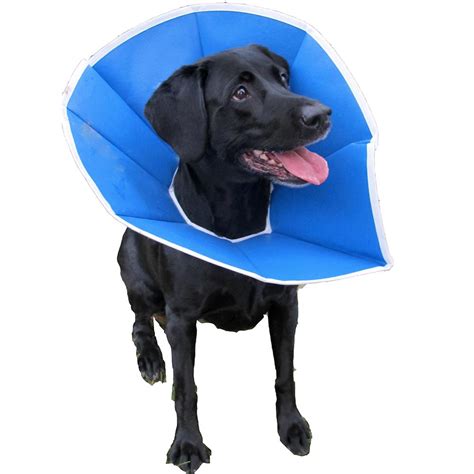Alternatives to Dog Cones: A Comprehensive Guide
As a pet parent, it’s heartbreaking to see your beloved canine companion in discomfort or pain. When your dog undergoes surgery or suffers from an injury that requires protection from licking, biting, or scratching, traditional dog cones can be bulky, uncomfortable, and impair their vision and mobility.

Fortunately, there are several innovative and more comfortable alternatives to dog cones. In this article, we delve into the many types of dog cone substitutes available, their benefits and drawbacks, and provide practical tips on choosing the best option for your dog.
Inflatable collars, also known as bumper collars or e-collars, are a great alternative to traditional hard dog cones. They provide a protective barrier around the dog’s head and neck while offering comfort and flexibility.
- Pros: Soft and comfortable, easy to clean, allows for easy eating and drinking
- Cons: Can be punctured, may not prevent dogs from reaching all injuries
Soft collars are made of lightweight, breathable materials, such as fabric or foam. They are less restrictive than hard cones, allowing your dog to move around more freely and have a better range of vision.
- Pros: Comfortable, allows for mobility, less likely to cause irritation
- Cons: May not provide full protection from all injuries, may not be suitable for all dogs
Protective shirts are a unique and comfortable alternative to dog cones. They cover the dog’s torso, providing protection for wounds or incisions on the body while leaving the head and limbs free.
- Pros: Comfortable, allows for maximum mobility, easy to put on and take off
- Cons: May not provide protection for head or neck injuries, may be difficult to keep on some dogs
Muzzles are typically used for short periods, such as during vet visits or grooming appointments, to prevent dogs from biting or snapping. They can also be used as an alternative to dog cones for certain injuries on the face.
- Pros: Prevents biting or licking, provides temporary protection
- Cons: Can be restrictive, may cause discomfort, not suitable for long-term use
For minor injuries or wounds that require protection from licking or scratching, bandages or wraps can be used instead of dog cones. These provide targeted protection and allow for flexibility and movement.
- Pros: Targeted protection, allows for mobility, can be customized for specific injuries
- Cons: May not provide full protection, can be difficult to keep in place
When choosing an alternative to dog cones, consider the following factors:
- Type of injury: The nature of your dog’s injury will determine the most suitable protective device.
- Dog’s personality: Some dogs are more tolerant of certain types of alternatives than others. Consider your dog’s temperament and behavior.
- Comfort and mobility: Choose an alternative that allows your dog to move around comfortably and eat and drink without difficulty.
- Fit and effectiveness: Ensure the alternative fits snugly but not too tightly and provides adequate protection for the injured area.
- Introduce the alternative gradually: Let your dog get used to wearing the alternative before using it for protection.
- Monitor your dog closely: Observe your dog’s behavior and ensure they are not able to reach the injured area.
- Clean the alternative regularly: Keep the alternative clean to prevent infection and ensure comfort.
- Contact your vet if necessary: If your dog experiences any discomfort or difficulty using the alternative, seek veterinary advice.
- Can I use a pillow instead of a dog cone?
Pillows provide limited protection and may not prevent your dog from reaching the injured area. It’s best to use a specifically designed alternative.
- How long should my dog wear an alternative to a cone?
This depends on the injury and your veterinarian’s instructions. Follow the veterinarian’s advice for the recommended duration of use.
- Can I use multiple alternatives at the same time?
In some cases, a combination of alternatives may be necessary for optimal protection. Always consult with your veterinarian before using multiple devices.
There are numerous alternatives to dog cones available, each with its own benefits and drawbacks. By considering the type of injury, your dog’s personality, and comfort levels, you can choose the best alternative to ensure your furry friend’s well-being during recovery. With the right alternative, your dog can heal comfortably and avoid the discomfort and restriction of traditional dog cones.
